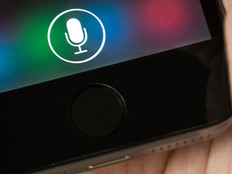Coming Unwired

Wireless is a hit at Playlist.com where young employees expect mobility, notes Steve Tidwell.
How popular is Wi-Fi? Given a choice between plugging into a local area network or connecting to a wireless network, employees at music startup Playlist.com overwhelmingly choose to remain untethered.
In fact, of the nearly 50 employees at the three-year-old Palo Alto, Calif.-based company, only two people use the wired network regularly, and one of them is IT department head Steve Tidwell.
“I tried to convince everyone that it’s always better to use the wired connection,” says Tidwell.
“We have a gigabit backbone. But we have a young group of employees, and they want their wireless. They don’t want to plug anything in,” says Tidwell, who serves as infrastructure manager of Playlist.com, a website that allows people to generate music playlists that they can share online with others.
Small business adoption of Wi-Fi is on the rise as more employees become mobile with notebook computers and smartphones, and as wireless equipment becomes more affordable and pervasive throughout society. Wi-Fi is available in hotels, airports and even airplanes. Many consumers have installed it in their homes, so they want it at work, analysts say.
“There’s a critical mass of workers who’ve come to regard 802.11 networks as a basic service, like having lights, a coffee machine and a water cooler in the office,” says Yankee Group analyst Phil Hochmuth. “People just expect it to be there.”
Consumer-grade Wi-Fi access points do have a place in some small businesses, where one access point will meet users’ requirements, such as very small offices or cafés that want to offer free Wi-Fi. But Burton Group analyst Paul DeBeasi says small companies that require multiple access points should purchase enterprise-class Wi-Fi equipment because they are easier to manage.
In the early days of Wi-Fi, access points carried all the intelligence, requiring IT administrators to individually configure and manage them. If they wanted to put in a new security policy, for example, they’d have to install the policy in all the access points individually. That’s the case with current consumer-grade access points. But today, with enterprise-class Wi-Fi equipment, IT departments can use a networking device, called a wireless LAN controller, to centrally configure and manage new access points. In this new architecture, IT staffers can make a change to the controller, and the change is pushed out to every access point.
“If we get a new access point, I just plug it into the network, and the controller configures it,” Tidwell says.
Tuning In to 802.11n
A year and a half ago, Playlist.com’s wireless network was just plain awful. The staff had cobbled together two consumer-grade 802.11g Linksys access points, one in each room of its 2,000-square-foot office. When staffers roamed from one room to the other, they would lose their connection and have to connect to the other access point using a different network name (called a service set identifier, or SSID).
The Wi-Fi network frustrated users, and when Tidwell joined the company, he was inundated with complaints. “The Linksys wireless routers are good products, but they are not meant for more than five to 10 people and they can’t handle our bandwidth requirements,” he says.
Tidwell researched several manufacturers, but liked what he saw in Aruba Networks. This April, when the company moved to a new office building, they purchased five Aruba AP-125 access points and a wireless LAN controller.
Tidwell chose the newer 802.11n standard over 802.11g because n is faster, offers wireless coverage at greater distances and is more reliable.
The 802.11n protocol, which was finalized as a standard in September, offers a theoretical throughput of 300 megabits per second. When signal noise is taken into account, the actual throughput is about 150Mbps, but it can reach more than 200Mbps in good conditions, DeBeasi says. That’s much faster than 802.11g, which has a theoretical speed of 54Mbps, but an actual speed of 25Mbps.
The new protocol, which can support older 802.11a/b/g computing devices, offers several new technologies that boost performance. Older Wi-Fi equipment communicated over a single antenna, but MIMO (multiple input, multiple output) technology uses multiple antennas to transmit and receive data simultaneously, providing more reliable and consistent wireless coverage.
Playlist.com’s marketing staff has regular meetings in conference rooms, where they demo the company’s technology to prospective customers — and they need the network to be fast and reliable, Tidwell says.
“We’re running all Macs here, and the newer ones are capable of 802.11n, so why not take advantage of that?” he says.
Installation was a cinch. The office’s previous tenant had standardized on Aruba’s Wi-Fi equipment, so the cabling was already installed. Tidwell plugged in the five access points, powered them using Power over Ethernet and then spent a few hours reading the documentation to configure the wireless LAN controller and connect it to the regular LAN. For security, Playlist.com used Wi-Fi Protected Access 2 (WPA2), which features the strongest encryption available today.
The Aruba 3200 Mobility Controller, designed for small branch offices, is full of management features. Through software, the controller automatically adjusts configurations to maintain optimal performance, including a load-balancing feature that ensures that the number of users per access point is split evenly, so no one access point is overloaded. When employees move around the office and go from one access point to another, they stay connected. Aruba’s technology also handles security, including the ability to detect rogue access points.
The 802.11n equipment, which can operate in both the 5 gigahertz and 2.4GHz bands, features more channels than 802.11g, which works only in the crowded 2.4GHz band — a huge benefit because Playlist.com’s office is surrounded by 50 other wireless networks. Aruba’s equipment automatically switches to an open channel if it spots interference from other wireless networks, Tidwell says.
In a survey of 351 organizations, the use of wireless LANs has increased from 52 percent of enterprises in 2006 to 89 percent in 2009.
Yankee Group
The company, which spent $11,000 on the new network, has already seen a return on investment because the faster speeds and improved reliability has increased employee productivity, Tidwell says.
“This has paid for itself,” he says.
Bastian Picks 802.11g
When faced with the g-versus-n conundrum, Bastian Material Handling chose “g” because the standard was more affordable and fit its employees’ needs.
BMH, one of the country’s largest independent material handling system integrators, was an early adopter of Wi-Fi. It had two aging 802.11b “prosumer” access points at its Indianapolis headquarters, so it was time to upgrade to newer technology.

Nick White of Bastian Material Handling banished dead zones by deploying 802.11g gear.
“We had an incredible amount of dead spots” says BMH IT Manager Nick White. “We had more dead spots than live spots.”
Earlier this year, the company upgraded to an enterprise-class Wi-Fi network using 13 802.11g access points and a wireless LAN controller from Cisco Systems, and the implementation has been a success.
The company standardizes on notebook computers and equips some employees with smartphones and personal digital assistants, so now they can connect their mobile devices to the Wi-Fi network to fetch e-mail when they’re away from their desks. In the warehouse, employees are using wireless scanners to manage inventory. Customers visiting headquarters, who have been craving Wi-Fi access, can now connect to BMH’s wireless network for the first time. White couldn’t give them access before because it would have given them access to his company’s internal network and potentially expose the company’s sensitive corporate materials.
With the new enterprise-class Wi-Fi equipment, White split employees and guests into separate virtual LANs. He implemented two SSIDs: one for employees to connect to the corporate network backbone and another for visitors who can access only the Internet.
BMH invested in 802.11g technology because 54Mbps is fast enough for the company’s needs. The Wi-Fi network gives the employees mobility and is not meant to replace the existing gigabit Ethernet LAN, White says. Only about 10 percent to 20 percent of the employees exclusively use Wi-Fi.
“Our desks are still wired, and it’s our preferred method of connecting,” he says. “We have a large storage array that keeps our AutoCAD files and designs, so the wired connection provides quite a bit more speed and reliability.”
Overall, employees are happy with the new Cisco wireless network. The company received a near immediate return on investment, White says.
“The previous wireless network was so weak,” he explains. “Now, when our sales teams bring in clients and do training sessions, they can all access the Internet. It gives us a competitive advantage because it makes our clients feel like we’re taking care of them.”







